
This Hairstreak species Electrostrymon sp. was seen on October 16, 2007 at Falcon State Park, Starr County, Texas; There was some discussion about whether it is hugon(sangala)/joya(canus) or guzanta - I feel it is the former, and below I propose some field marks that need verifying:
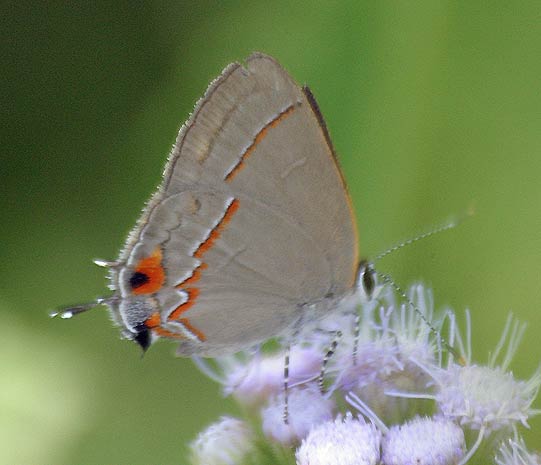
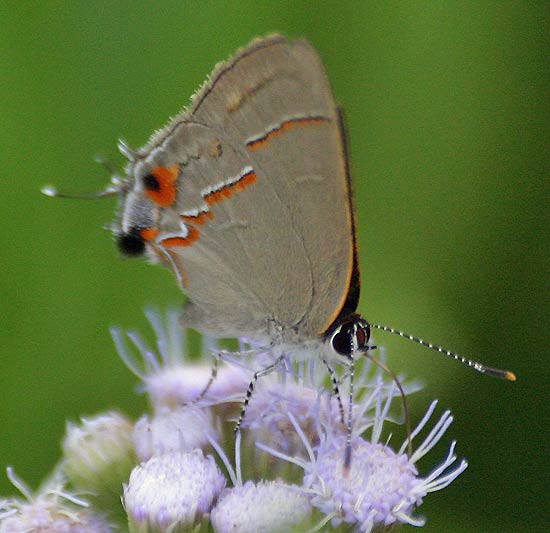
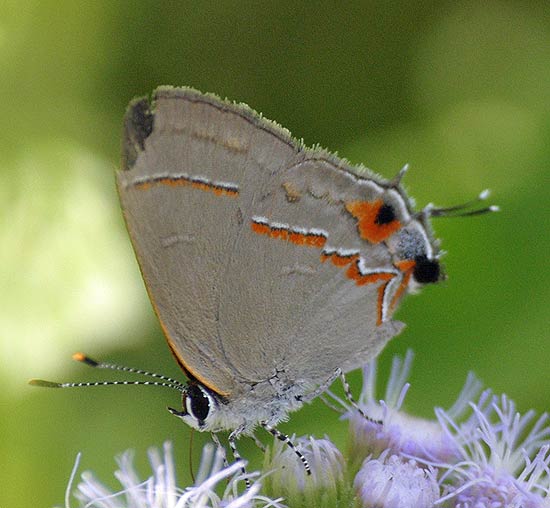
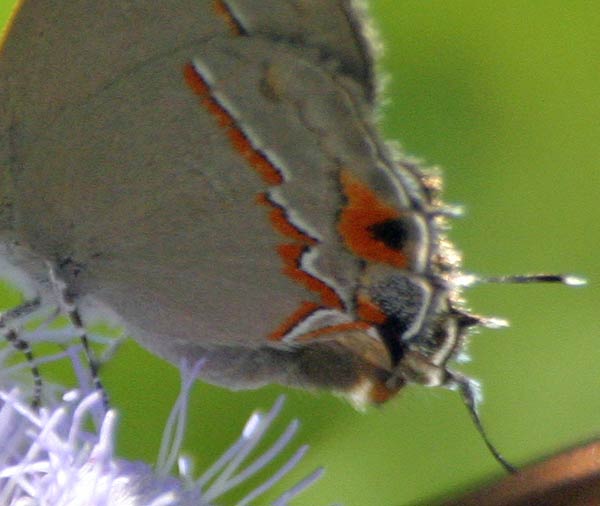
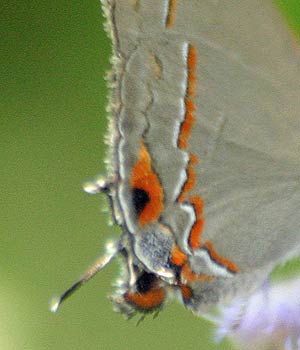
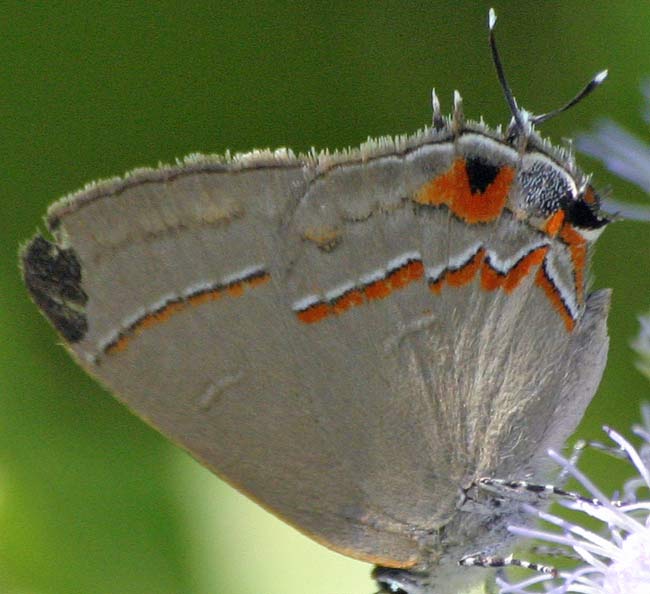
Tentative features to separate Ruddy/Muted Hairstreak Electrostrymon hugon(sangala)/joya(canus) from Orange-crescent Hairstreak E. guzanta; from most to least important:-
The ground color of guzanta always seems to be brownish, even on fresh individuals; hugon seems to be distinctly grayer, while joya is in-between.
A: The red outside the red cap of the thecla spot is consistantly different in shape:
hugon/joya has a red equilateral or almost isosceles tringle with its inner, distal corner reaching or almost reaching the base of the thick red thecla spot cap; also this outer red triangle is completely joined to the red thecla cap. guzanta has a red patch that is roughly like a shallow filled-crescent that fills the curved area distal to its thin black cap, and the extent of its inner edge falls well short of the base (most distal point) of the red thecla spot cap; also this red patch is partly or completely separated from the red over the thecla spot. Hard to explain, but hopefully easier to see in the comparison.
B: The red mark above and between the blue anal spot and the large inner black spot is consistantly different in shape:
hugon/joya has a thin red oblong, perpendicular to the thin black capping, and this red does not creep outwards over the inner half of the blue anal spot (on some there is a small spot of distinctly paler orange in this area, usually paired with a similar one next to the red thecla cap but separated by a pale mark over the center of the anal spot). guzanta has a rather triangular red patch due to it expanding basally to creep outwards over the inner half of the blue anal spot; the outer part of the blue anal spot does not have any red creeping over it from the red thecla cap. Again hard to explain, but hopefully a bit easier to see in the comparison.
C: The shape of the black subterminal line at the base of the shorter outer "tail" is subtlely different: hugon/joya has only a slight, rather gentle angle, while guzanta has a steeper, more pronouced "step".
D: The forewing submarginal "line" tends to be blacker and with straightish component segments on hugon/joya, while guzanta has a browner/warmer (usually less obvious) "line" where each segment is rather diffuse and typically shaped like a very shallow "V".
E: guzanta often (but not always) has a rather thick blackish subterminal line between the inner larger "tail" and the inner black spot - this thickness is due to the presence of a narrow dark gray band on the outer side of the thin black line; hugon/joya seems to lack the dark gray outer band, producing a very thin black subterminal line here.
F: On guzanta the outermost of the four segments that make up the submarginal black line beyond the thecla spot always has a some red on the distal side (but can be hard to see due to heavy wear); some hugon/joya also show this, but it is less extensive and paler/fainter. The two center segments of this black line lack any red on hugon/joya (maybe just a suggestion of color is sometimes visible) while on guzanta these segments are typically clearly marked with red on the distal side (but again can be hard to see due to heavy wear).
I expect that with a larger sample (mine is tiny) some of the above will not hold up, but I hope that A and possibly B will be pretty consistent, and that using all five elements should allow reasonably consistent separation!
Below is the same hairstreak:

Below is an Orange-crescent Hairstreak E. guzanta:
